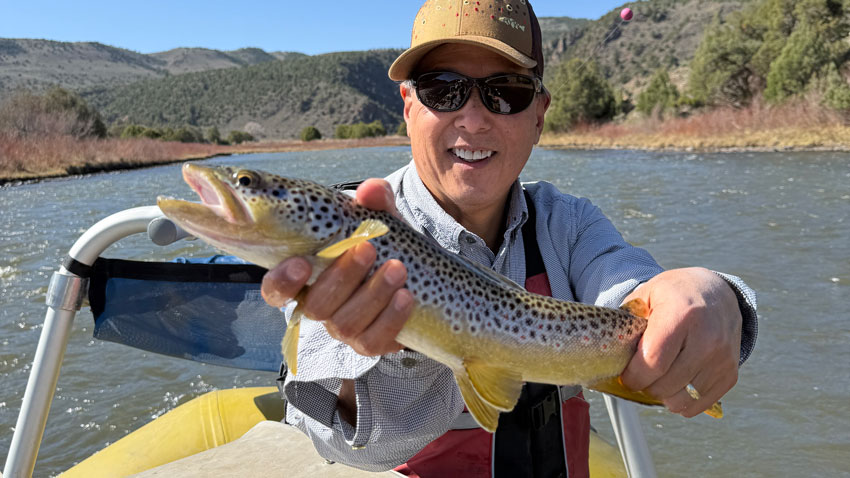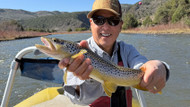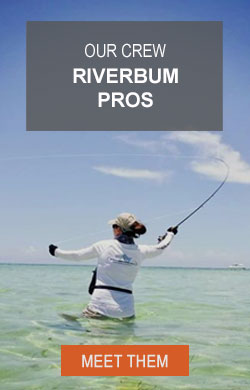Why the Prince Nymph Is One of the Best Fly Fishing Patterns

When I first started as a fly fishing guide over two decades ago, one of the first lessons I learned was this: if you want to consistently catch fish—whether you're on a freestone stream, tailwater, or alpine lake—you better have a Prince Nymph in your box. Over the years, I’ve seen this fly fool everything from stubborn Colorado browns to aggressive Montana rainbows and even the occasional high-country brookie. It’s no exaggeration when I say the Prince Nymph is one of the most effective and versatile nymph patterns ever tied.
A Brief History of the Prince Nymph
The Prince Nymph has been around for the better part of a century, and while there’s some debate about who first tied it, most credit the pattern to Doug Prince of Monterey, California, in the 1930s or ’40s. Interestingly, the pattern was initially called the “Brown Forked Tail” until it was renamed to honor Prince himself.
What makes the Prince Nymph stand out historically is how ahead of its time it was. Long before beadheads and flashy attractor patterns became commonplace, the Prince featured contrasting colors (dark body, white wings), a peacock herl abdomen, and even biot tails and hackle—components we now consider standard for all-around success.
Why the Prince Nymph Works So Well
As a guide, I'm constantly searching for flies that produce under a wide range of conditions, and the Prince Nymph does just that. Here's why it earns a permanent spot in my fly box:
- Attractor and Imitator in One
The Prince Nymph straddles the line between impressionistic and attractor-style flies. Its peacock body, brown goose biot tail, and white goose biot wings don’t perfectly match any single aquatic insect—but that’s the beauty of it. To a trout, it could be a mayfly nymph, a stonefly, or even a caddis larva depending on how it’s fished and the size used. That ambiguity allows it to be productive in a wide range of hatches and water types.
- Built-In Trigger Points
The stark contrast between the peacock body, white wings, and gold beadhead gives the Prince multiple trigger points. Those white biot wings, especially, flash in the current and grab a trout’s attention. Add in the movement of soft hackle and the subtle shimmer of peacock herl, and it’s a fly that says "Eat me!" even to pressured fish.
- Year-Round Effectiveness
I’ve guided through spring runoff, high summer, early fall hatches, and even dead-of-winter trips. The Prince Nymph consistently works across all seasons. In cold water, it sinks quickly and stays in the strike zone. In warmer months, it competes with hatching naturals and still gets eaten. It’s one of the rare flies that’s just as effective in January as it is in July.
- Deadly in a Tandem Rig
As part of a two-nymph rig, the Prince Nymph is an excellent lead fly. It’s heavy enough to get a second, smaller fly (like a midge or mayfly emerger) down, and it often gets hit before the dropper even has a chance. I often pair it with a size 18 Zebra Midge or RS2, and that combo has pulled more trout to the net than I can count.
Variations and Adaptability
Over time, tiers have developed countless variations of the Prince Nymph—beadhead, rubber-legged, tungsten, micro sizes, flashback, jig-style—you name it. Each has its niche, but the classic beadhead Prince in sizes 12–16 is still my go-to in most situations. For deep pools or heavy water, I switch to a tungsten version tied on a jig hook to reduce snagging and get down fast.
Final Thoughts
In a world full of flashy, new-age nymph patterns, the Prince Nymph still earns its keep the old-fashioned way: by catching fish, day in and day out. If you’re just starting to build a fly box or refining your go-to patterns, do yourself a favor—make room for the Prince. It’s not the fanciest fly, and it doesn’t mimic a single hatch perfectly, but when the line goes tight and a trout surges downstream, none of that will matter.
After all these years, the Prince Nymph still rules the river.







